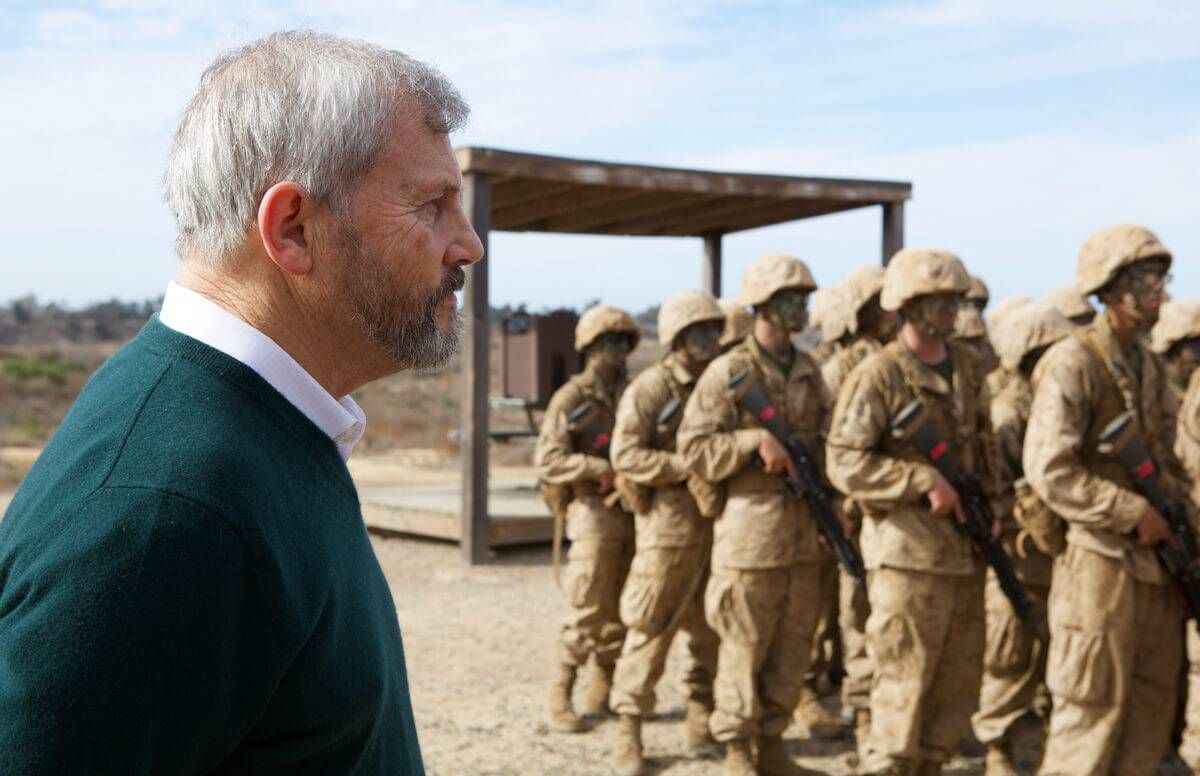What’s It Like to Go to War?
‘Going to War’ on PBS shows the veteran experience firsthand
“It was just chaos.” Those are the first four words in the PBS documentary Going to War. The 2018 film features the voices, faces and stories of 20 veterans of all ages who fought in wars from Korea to Afghanistan and reveal to viewers not only the chaos, but the universal fear, sadness, isolation and unity that those who serve endure.

Commentary and interpretation from war authors Karl Marlantes (What It Is Like to Go to War and Matterhorn: A Novel of the Vietnam War) and Sebastian Junger (War) are also woven through the documentary, along with footage from battlegrounds and basic training facilities. The film covers the war spectrum from the start to finish — the realities of boot camp and training to combat and the return home.
In a conversation with Next Avenue, Going to War producer Michael Epstein discussed the process of making the film and its intended impact on veterans and non-veterans alike:
Next Avenue: What did including Marlantes and Junger add to the film?
Michael Epstein: Marlantes has the point of view of a former marine. He knows the experience of training for combat and how you carry that back home. He also gives the philosopher’s eye to that experience. Junger comes at it from a different point of view — a civilian’s perspective — but a civilian who has combat experience. He’s been attacked and he’s been shot at.
"What we can do a better job for ourselves and for our country and our veterans is to just stop and to listen to them."
They both bring that first-person experience that you need. We needed to get first person stories as well as broader commentary. That became a defining voice of the film. I didn’t want experts. I wanted the experts to be marines and the soldiers who served. The veterans are in the moment, and Junger and Marlantes are in the moment and above it.
We didn’t have to stop and tell [viewers], 'Well this is what it means. This is what you should think.' We were able to make a film that was very experiential. I feel like that’s what’s not communicated to civilians and that veterans often don’t find in popular or mainstream media. I think [veterans] have it when they’re alone with their friends or veterans who have served, but when they leave that tight-knit group, they don’t find that kind of conversation elsewhere. We do a terrible job of just listening to that experience.
We as a society are quick to celebrate veterans, but we’re not as quick to listen to their stories. Why do you think that is, and how can we be better at it?
Listening is hard, right? I mean really genuinely, meaningfully listening is hard. Right now as a culture, we don’t like to work. We like to be entertained. I think we also live in a moment where — broadly speaking — we don’t want much after that. I don’t mean to say people are being disingenuous, but [veterans] let us off the hook. They don’t ask anything of us.
What we can do a better job for ourselves and our country and our veterans is to just stop and to listen to them. Let them talk and let them tell us about that experience — what it’s really like. Not the sugar-coated one that gets celebrated. And to not judge, because that’s also essential. The mission of the program is to open a conversation and to give people a window into the things you don’t often hear — about training, about being in combat, about dealing with the aftermath of combat.
The movie gives space to both the positive and negative things veterans got out of their time. How did you go about striking a balance of representation of these experiences and the different viewpoints that some of the subjects carry?
That was really the mission of the film. We went out seeking that. It was a delicate balance to see how far we could push things, how much we could say, how much we would be allowed to say, and I’m very proud of the final film in that regard. It’s obviously not everything. Hopefully it doesn’t present itself as if it’s every experience of war and combat.
I approached it with this notion that if you see war or combat — it doesn’t matter where you were — there is something universal through that experience on an emotional level. The technology, the photography, the training and all of those things all might be different, but the experience of combat on a human level is, if not universal, then the closest we can come, and timeless.
In your interviews with the subjects, what was it like to ask the veterans to divulge some of their most traumatic and difficult times on camera? For some of these people, it may be their first time talking in detail about some of these things.
It’s hard to not be trite about it, but it was deeply moving. They were open and eager and grateful. I think because the kinds of conversations that we had are so rare, they were not so much a set of questions as they were kind of just a conversation. After some time, the lights and the cameras and all of the people just disappeared, and it was just me and them.
I’m very grateful because it’s hard to expose yourself and to be that open and honest. It requires a level of trust not only in the moment but then also afterward — trusting us to be a good steward of your story. In many ways, your story is the most precious thing you have, and I think that’s especially true for veterans. In many ways, these are the most important experiences that they will have in their entire lives. The stories define their lives.
(Editor's Note: Going to War is a production of Twin Cities PBS in association with Vulcan Productions, and PBS. You can stream the film online with a PBS Passport here.)


